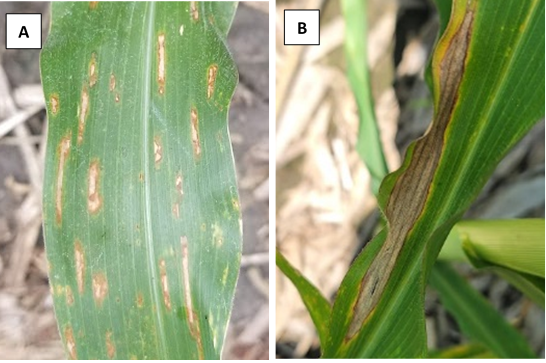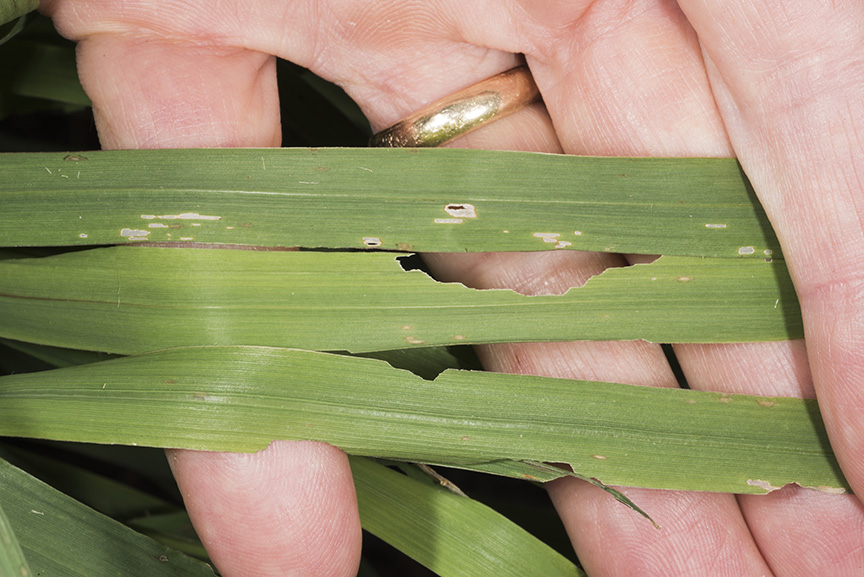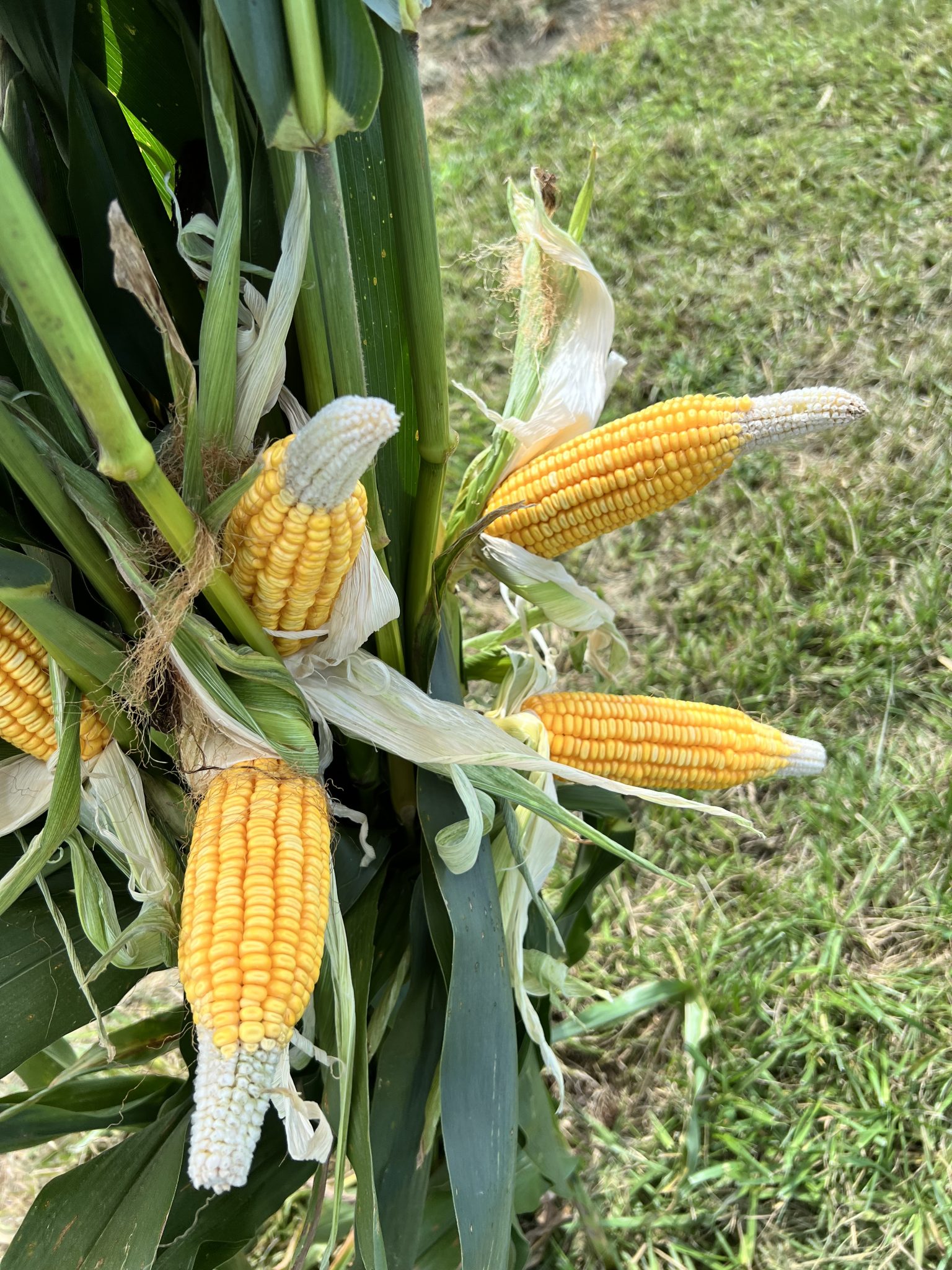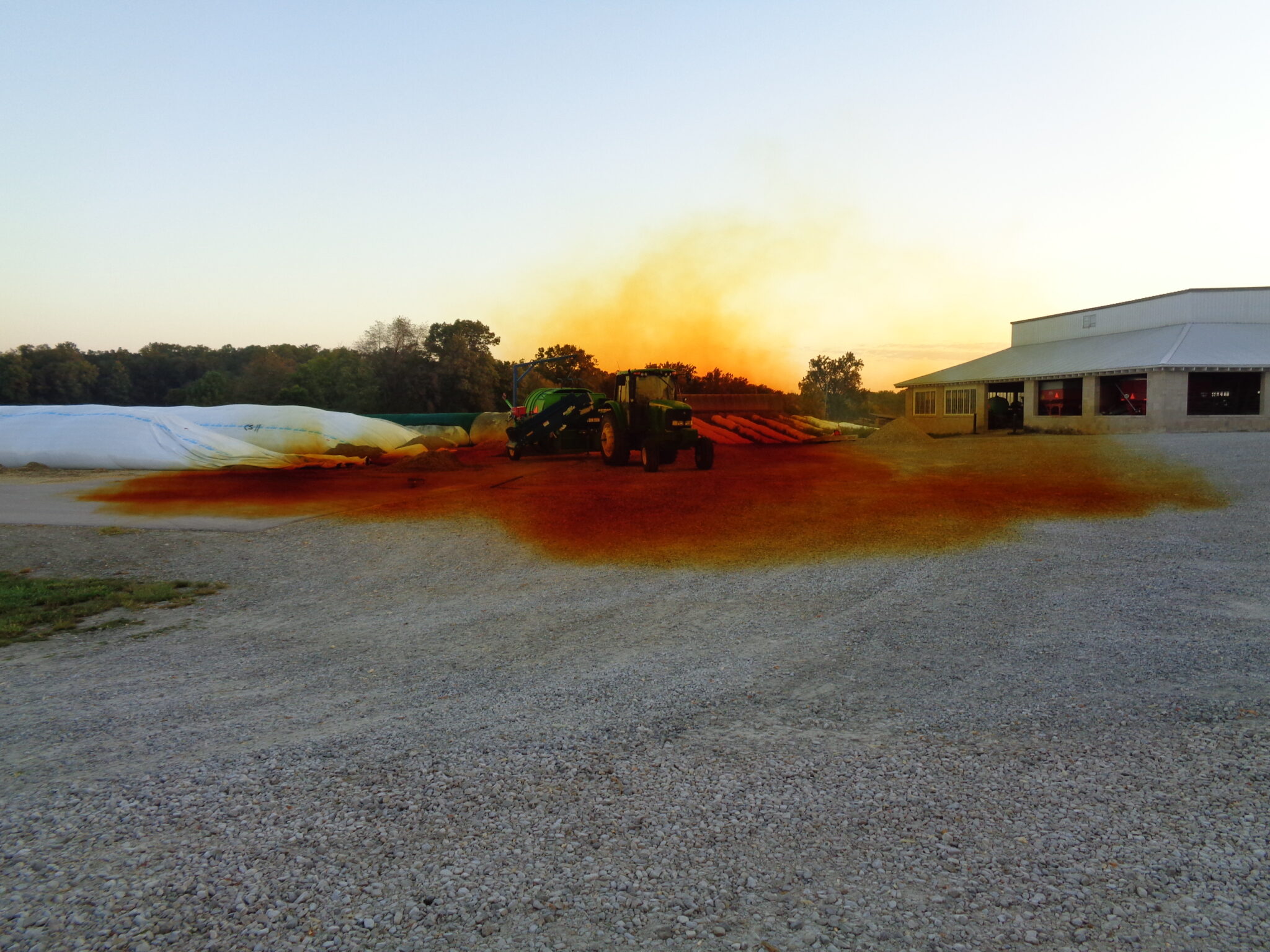
It is important to continue to scout for diseases in both corn and soybeans. Recent rains have created favorable environmental conditions for the development of foliar diseases in both crops.

It is important to continue to scout for diseases in both corn and soybeans. Recent rains have created favorable environmental conditions for the development of foliar diseases in both crops.

The biggest challenge so far this year for Indiana corn production has been the dry conditions experienced throughout the state (Figure 1).
Insecticide recommendations for controlling in-season infestations have been updated for corn, soybean and alfalfa.

Armyworm moth captures have varied throughout the state for the last eight weeks (see “Armyworm Pheromone Trap Report”).

This summary is based on 55 field scale research trials conducted at Purdue Ag. Centers and with on-farm collaborators around the state of Indiana from 2014 – 2022.

Sulfur Deficiency
Sulfur (S) deficiency has become more common in
Indiana crops because S emissions from coal-fired power
plants have decreased over the past few decades
(Camberato et al., 2022). Consequently, atmospheric S
deposition to soils has also decreased.
Sulfur deficient corn plants exhibit a general yellow-
green color from top to bottom of the plant, often also
with visible leaf striping (Fig. 1). Other nutrient deficiencies
can cause striping and can sometimes be confused with S

Although yield is always at the forefront of many corn farmers and agronomists’ minds during harvest, another important discussion topic each fall is that of grain test weight.

Each year as corn harvest approaches and the anticipation for finally being able to get behind the wheel of the combine heighten, it is not uncommon to find work benches, dinner tables, and agronomist office desks full of corn ears.

Perhaps it is fitting that the eerie poisonous gas flowed from the end of a silo bag not adequately sealed at the end with a lime pile as this is “National Farm Safety and Health Week”.

We’ve received multiple reports of impressive rootworm beetle populations in cornfields. Most of these fields were continuous corn without rootworm larval protection. These fields seem to be the exception, but the increasing trend is troublesome. This article is a reminder that is pest is still alive and well. For years, high adoption of highly effective Bt hybrids for rootworm control has likely contributed to a decline in rootworm populations. Overall, Indiana producers have managed this pest through a combination of crop rotation and/or use of Bt-rootworm hybrids. This approach, over many years, drastically reduced rootworm populations compared to 20 years ago. More recently, as state-wide rootworm risks to corn damage declined, producers have used less rootworm protection on their corn. This was a combination of those wanting to save money and take a chance with no protection or those assessing their risks on a field-by-field basis with scouting[Read More…]
© 2024 Purdue University | An equal access/equal opportunity university | Copyright Complaints | Maintained by Pest&Crop newsletter
If you have trouble accessing this page because of a disability, please contact Pest&Crop newsletter at luck@purdue.edu.